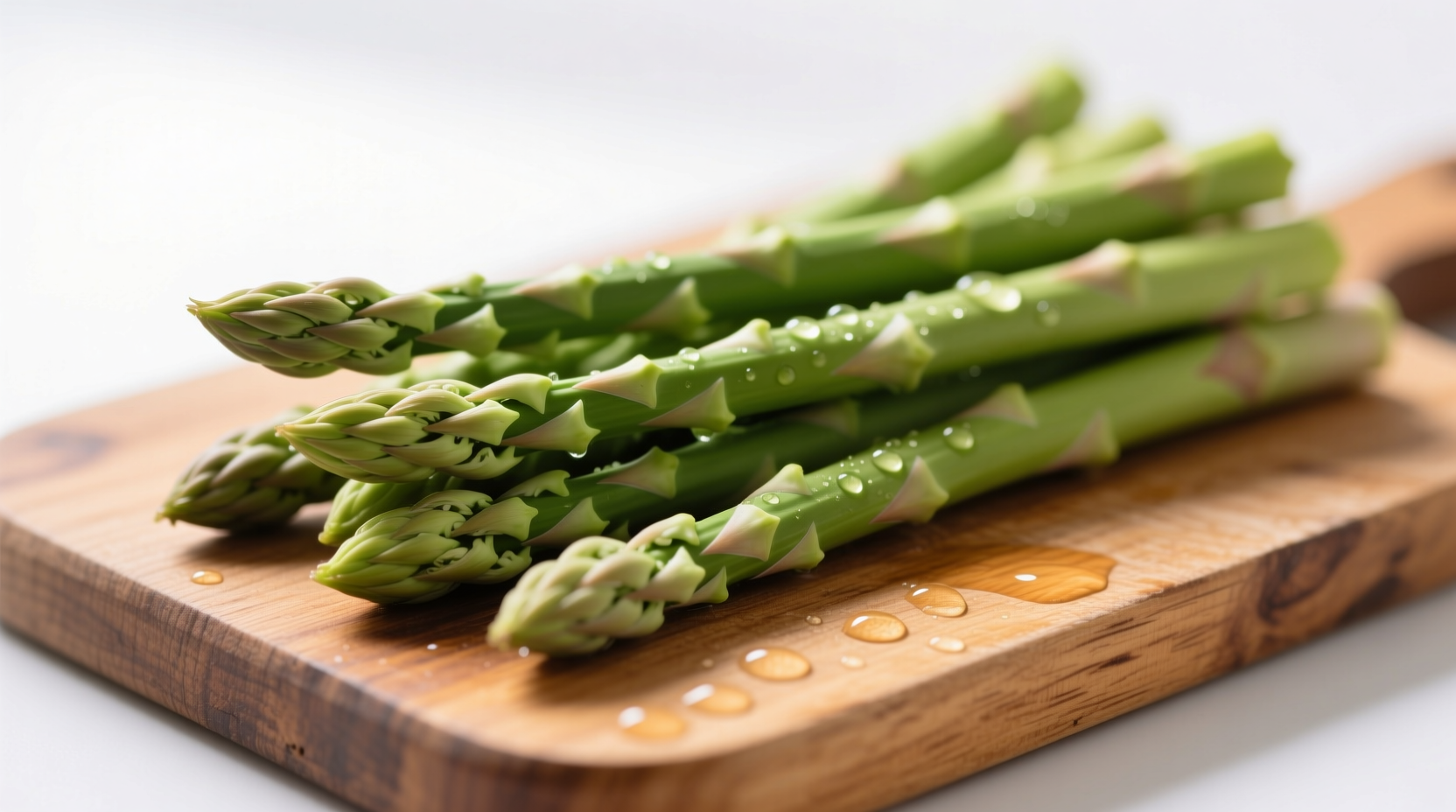Ever wondered what makes asparagus such a polarizing vegetable on dinner plates worldwide? Whether you're a lifelong fan or considering trying it for the first time, understanding what does asparagus taste like can transform your cooking experience and help you appreciate this ancient vegetable's unique characteristics.
The Essential Flavor Profile of Fresh Asparagus
When evaluating how does asparagus taste when fresh, several key elements define its sensory experience:
- Primary taste: Earthy and grassy with subtle green bean-like notes
- Secondary notes: Mild nuttiness (especially in thicker stalks) and a delicate sweetness
- Mouthfeel: Crisp when raw, tender-crisp when properly cooked
- Aroma: Fresh-cut grass with subtle herbal undertones
- Aftertaste: Slightly bitter finish that varies by cooking method
The specific taste experience depends heavily on harvest timing. Asparagus harvested in early spring typically has a more delicate, sweeter flavor compared to late-season spears, which develop stronger earthy notes. This seasonal variation explains why many people describe asparagus taste as "fresh" in April but "woody" by June.
How Cooking Transforms Asparagus Flavor
Understanding what cooked asparagus tastes like versus raw is crucial for maximizing enjoyment. The vegetable's flavor profile changes dramatically based on preparation method. Here's how different techniques affect the taste:
| Cooking Method | Flavor Impact | Texture Result | Best For |
|---|---|---|---|
| Raw (thin spears) | Crisp, grassy, slightly sweet | Crunchy | Salads, crudités |
| Steamed (3-5 min) | Delicate, vegetal, mild bitterness | Tender-crisp | Classic preparation, purists |
| Roasted (400°F/200°C) | Rich, nutty, caramelized notes | Crisp-tender | Flavor enhancement, beginners |
| Grilled | Smoky, intensified earthiness | Slightly charred exterior | Summer cooking, outdoor meals |
| Sautéed with garlic | Complex, savory, umami-rich | Evenly tender | Quick meals, flavor pairing |
This comparison of asparagus taste different cooking methods reveals why preparation technique matters so much. Roasting at high temperatures triggers the Maillard reaction, transforming asparagus's natural sugars into complex caramelized flavors that mask its characteristic bitterness. This explains why many people who dislike boiled asparagus enjoy it when roasted.

Varietal Differences: Green vs White vs Purple
Not all asparagus tastes the same. The variety significantly impacts the flavor experience:
- Green asparagus: Most common variety with pronounced grassy, earthy notes and moderate bitterness. Offers the most complex flavor profile that responds well to various cooking methods.
- White asparagus: Grown underground to prevent chlorophyll development, resulting in a milder, more delicate flavor with subtle mushroom-like notes and less bitterness. Often described as having a "softer" taste profile.
- Purple asparagus: Contains anthocyanins that provide sweeter, fruitier notes with reduced bitterness. Cooks faster than green varieties and turns green when heated due to chlorophyll activation.
According to research from the Oregon State University Extension Service, these varietal differences stem from varying concentrations of asparagusic acid and other sulfur compounds that create asparagus's distinctive flavor chemistry. White asparagus contains lower levels of these compounds, explaining its milder taste.
The Science Behind Asparagus' Unique Aftertaste Phenomenon
One of the most discussed aspects of what asparagus tastes like is the distinctive aftereffect many people experience. Approximately 40% of the population produces metabolites from asparagusic acid that create a strong, sulfuric odor in urine within 15-30 minutes of consumption. This phenomenon, documented in studies published by the National Center for Biotechnology Information, doesn't affect the actual taste of asparagus but contributes to its polarizing reputation.
Interestingly, genetic research shows that while most people produce these metabolites, only about 50% can actually smell them due to a specific olfactory receptor gene variation. This explains why some people question others' experiences with "asparagus pee"—they literally cannot detect the odor themselves.
Perfect Flavor Pairings for Asparagus
Understanding what does asparagus go well with can elevate your culinary experience. These pairings work because they balance asparagus's natural characteristics:
- Lemon or vinegar: Cuts through earthiness and enhances freshness (ideal for steamed asparagus)
- Garlic and olive oil: Complements nutty notes while reducing perceived bitterness
- Hard-boiled eggs: Classic combination where egg yolk's richness balances asparagus's vegetal notes
- Almonds or pine nuts: Enhances natural nuttiness while adding contrasting crunch
- White wine: Sauvignon Blanc's acidity complements asparagus's grassy notes
Professional chefs at the Culinary Institute of America note that asparagus's flavor complexity makes it one of the few vegetables that can stand up to bold flavors like anchovies or blue cheese without being overwhelmed—a testament to its unique taste profile.
Selecting and Storing Asparagus for Optimal Flavor
The answer to why does asparagus taste bitter sometimes often relates to improper selection or storage. Follow these guidelines for the best flavor experience:
- Selection: Choose firm, straight spears with tightly closed tips. Avoid wilted or shriveled stalks.
- Thickness: Thicker spears offer more sweetness and meatiness; thinner spears provide more delicate flavor.
- Storage: Stand upright in 1-2 inches of water (like flowers) and refrigerate, covered with a plastic bag.
- Freshness window: Consume within 2-3 days for peak flavor; after 4 days, asparagus develops noticeable bitterness.
According to USDA agricultural research, asparagus loses approximately 50% of its sugar content within 24 hours of harvest, converting it to tough, fibrous lignin. This explains why farm-fresh asparagus tastes significantly sweeter than supermarket varieties that have traveled long distances.











 浙公网安备
33010002000092号
浙公网安备
33010002000092号 浙B2-20120091-4
浙B2-20120091-4